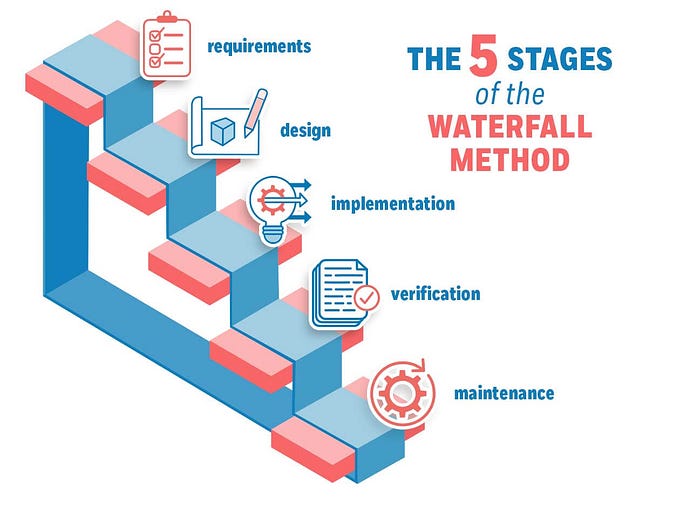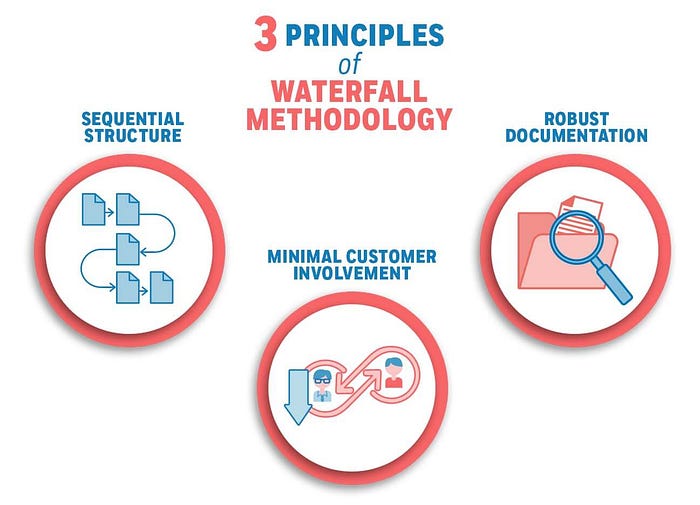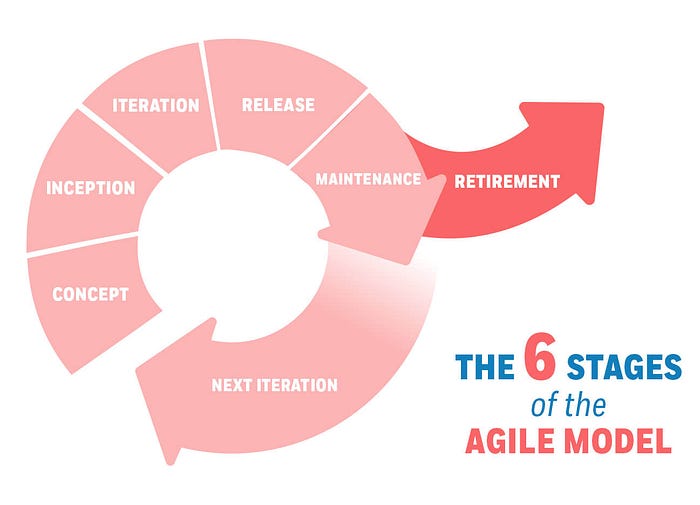Navigating the business world can be a daunting task, especially when embarking on your first venture. One essential skill that every entrepreneur must master is project management. Simply put, project management is the practice of initiating, planning, executing, controlling, and closing a team’s work to achieve specific goals within a specified time. It’s a valuable asset for any business owner, with multiple approaches offering different paths to success.
Understanding these approaches is critical, as each one provides unique benefits and strategies for dealing with the complexities of running a project. Let’s explore them in more detail.
1. Traditional Project Management (Waterfall)
Traditional or Waterfall project management is a linear, sequential approach. It starts with defining the project’s scope and objectives, followed by scheduling, execution, monitoring, and finally, project closure. This method works well when goals are clearly defined and unlikely to change. However, it might not be as flexible for projects where goals may evolve or are unclear from the onset.
The Waterfall model follows a clear, linear path. Each phase begins only after the previous one is complete.

Pros: It’s easy to understand and manage, with clear stages and deliverables. The rigid structure can make it easier for new businesses to grasp project management basics.
Cons: It lacks flexibility. Once a phase is complete, it’s difficult to go back and make changes. It may not be suitable for complex projects that require adaptation and quick decision-making.
Issues: If you need to adjust your strategy partway through, you might face significant setbacks or even have to start over.

2. Agile Project Management
Agile is a flexible and iterative approach to project management. It was initially used in software development, but it’s now applicable in many other fields. Agile’s focus is on delivering small, usable portions of the project at a time, rather than delivering everything at once at the end. This iterative process allows for continuous refinement and adaptation, making it ideal for projects with undefined or changing requirements.
Agile is all about flexibility and iterative progress. It involves frequent reassessment and adaptation of plans.

Pros: Agile is very responsive to change, making it suitable for projects with unclear or evolving requirements. It encourages team collaboration and customer feedback.
Cons: It requires a significant time commitment and close supervision. Without proper management, projects can go off-track, and the scope can creep.
Issues: If your team lacks discipline or if you have stakeholders who prefer a set plan, Agile may create more problems than it solves.
3. Scrum
Scrum is a subtype of Agile that uses short, fixed-length portions of work called ‘sprints’. Sprints typically last one to four weeks, and the work to be done in each sprint is decided at the beginning. Scrum also involves daily meetings to discuss progress and any issues that may have arisen. This approach encourages teamwork, adaptability, and transparency.
Pros: Scrum encourages productivity, transparency, and flexibility. It allows teams to prioritize work effectively and adapt to changes quickly.
Cons: It can be stressful due to its fast pace. It requires strong commitment and active involvement from all team members.
Issues: If your team is not used to the high-paced rhythm of Scrum, or if there’s a lack of leadership or direction, it could result in burnout and project failure.
4. Lean Project Management
The Lean approach comes from the manufacturing sector and aims to maximize value while minimizing waste. In project management, this translates to delivering value to the customer faster by streamlining and eliminating non-essential tasks. The Lean methodology encourages continuous improvement and focuses on delivering quality products and services.
Lean is about maximizing value while minimizing waste, focusing on efficiency, and delivering customer value faster.
Pros: It increases efficiency, reduces waste, and focuses on customer value. It’s good for cost and resource optimization.
Cons: It requires a significant shift in culture and practices. It might not be suitable for complex projects where change is a constant.
Issues: Implementing Lean requires a deep understanding of Lean principles and might be challenging for startups without experienced leadership.
5. Kanban
Kanban is another Agile subset that visualizes the workflow of a project. It uses a board with columns representing different stages of the process. As work progresses, tasks are moved from one column to the next. The aim is to identify bottlenecks and ensure a smooth, continuous workflow. Kanban is excellent for projects where work requests come in randomly and need to be dealt with systematically.
Kanban is a visual method for managing workflow, where work items are represented visually to give an overview of production within a system.
Pros: Kanban improves flow, reduces waste, and helps identify bottlenecks. It’s highly flexible and less structured, which can be beneficial in a dynamic environment.
Cons: It doesn’t provide a holistic view of a project’s progress toward its end goals. It also requires discipline to maintain the board and keep tasks flowing.
Issues: If tasks are not properly managed or prioritized, work can pile up in one stage, causing delays and inefficiencies.
6. Critical Path Method (CPM)
The Critical Path Method is a step-by-step technique used to schedule project activities. It involves identifying the most important tasks (the ‘critical path’) and scheduling them in a way that ensures the project is completed in the shortest time possible. This method is ideal for large, complex projects with interdependent activities.
CPM is a step-by-step project management technique for process planning that defines critical and non-critical tasks.
Pros: It’s great for planning and scheduling, helping you identify the shortest time possible to complete a project.
Cons: It assumes you can predict the time and cost for each activity accurately, which might not always be the case in a real-world situation.
Issues: Delays in critical tasks can prolong the project schedule, and it might not handle unexpected changes well.
7. PRINCE2
PRINCE2 (PRojects IN Controlled Environments) is a process-oriented method that provides a detailed, step-by-step guide for managing projects. It focuses on business justification, defining the project organization’s structure, and using a product-based planning approach. PRINCE2 is widely recognized and used internationally, particularly in the UK government.
Pros: It’s a standardized approach that’s internationally recognized. It offers clear roles and responsibilities and a set process to follow.
Cons: It can be too rigid for some projects, and it requires formal training and certification.
Issues: The lack of flexibility can be problematic in fast-changing environments. Also, extensive documentation can be time-consuming for smaller teams.
These approaches represent a wide array of philosophies and strategies for managing projects. Choosing the right one depends largely on your specific business context and needs. It’s important to remember that these are not mutually exclusive. You might find that a hybrid approach — combining elements from several methodologies — works best for you.

The beauty of project management methodologies is that they can be combined and customized to suit your business's unique needs. Just as a chef might create a signature dish by blending different ingredients, so too can an entrepreneur create a hybrid project management approach that balances flexibility with structure, responsiveness with planning, and innovation with efficiency.
Adapting and combining different methodologies is often referred to as a “hybrid” or “blended” approach. For instance, you might use the structure of Waterfall for the initial stages of your project when objectives need to be defined clearly, and then switch to Agile for execution and implementation when adaptability is key.
Consider Kanban’s visual system with Scrum’s sprint cycles to improve task tracking and work management. This combination could help your team see the bigger picture while also staying focused on their immediate tasks.
Moreover, you might implement Lean’s efficiency-focused philosophy across all project activities, regardless of the primary methodology used. Lean could help keep wastage to a minimum and ensure that all activities deliver value.
When blending methodologies, however, be mindful not to create a confusing mix that could lead to miscommunication or misunderstandings. The goal is to benefit from the strengths of each approach and offset their weaknesses.
Remember, the best project management methodology is the one that helps your team work efficiently and effectively while meeting the project’s objectives. Therefore, it may take some trial and error before you find the perfect mix.
Understanding and applying effective project management approaches is key to achieving your business goals. It enhances productivity, improves resource utilization, and ensures your team is working towards a common goal. As you embark on your entrepreneurial journey, these skills will become invaluable to your success.